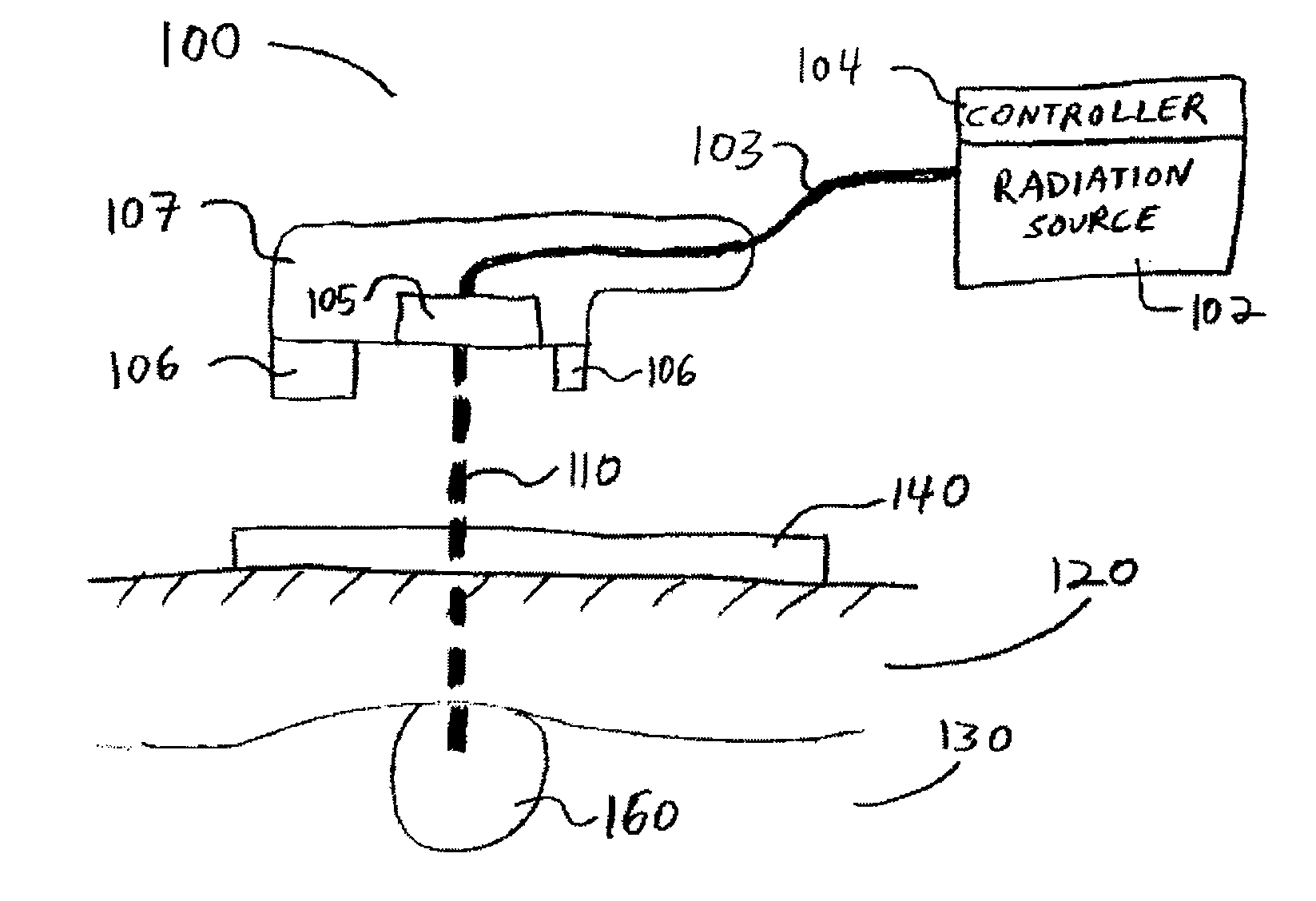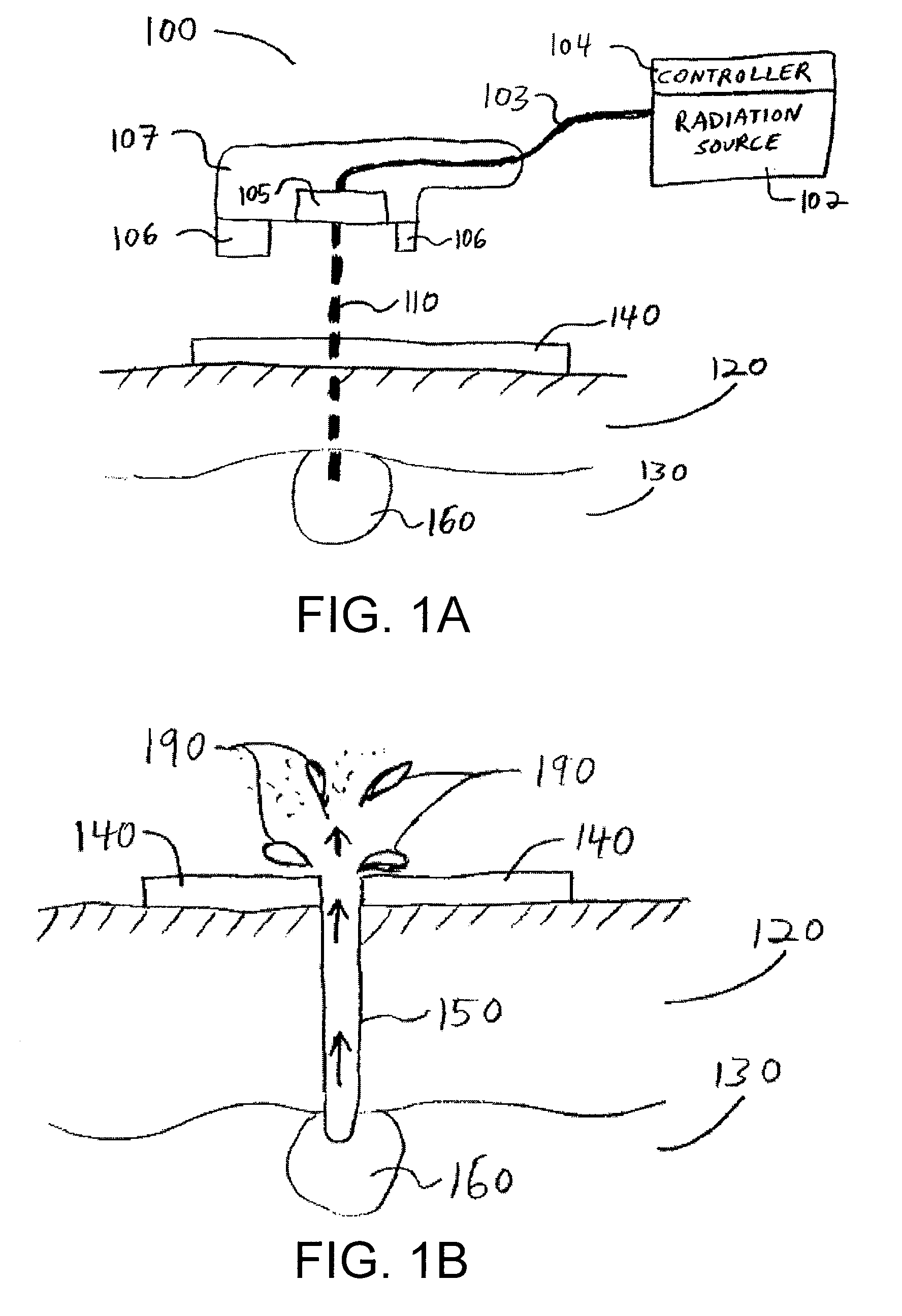Apparatus and method for fat removal
- Summary
- Abstract
- Description
- Claims
- Application Information
AI Technical Summary
Benefits of technology
Problems solved by technology
Method used
Image
Examples
Embodiment Construction
[0011]Exemplary embodiments of methods and apparatus can be provided for treatment of fatty tissue, including removal and / or thermal damage of fatty tissue. The exemplary embodiments of the methods and apparatus can facilitate an ablation of portions of skin tissue to form a plurality of small holes that extend from a skin surface at least through substantially the entire thickness of the dermal layer, e.g., to a depth that reaches the subcutaneous fat layer. This exemplary procedure can result in heating, thermal damage and / or vaporization of a portion of the fatty tissue. The ablated holes can be small, e.g., less than about 1 mm in diameter, or less than about 0.5 mm in diameter, which can facilitate a rapid healing of the tissue surrounding the holes.
[0012]The tissue can be ablated using, e.g., an ablative laser such as a CO2 laser, a mid-IR fiber laser, or the like, or another source of radiation or optical energy capable of ablating skin tissue. A control arrangement and an op...
PUM
 Login to View More
Login to View More Abstract
Description
Claims
Application Information
 Login to View More
Login to View More - R&D
- Intellectual Property
- Life Sciences
- Materials
- Tech Scout
- Unparalleled Data Quality
- Higher Quality Content
- 60% Fewer Hallucinations
Browse by: Latest US Patents, China's latest patents, Technical Efficacy Thesaurus, Application Domain, Technology Topic, Popular Technical Reports.
© 2025 PatSnap. All rights reserved.Legal|Privacy policy|Modern Slavery Act Transparency Statement|Sitemap|About US| Contact US: help@patsnap.com



